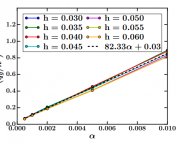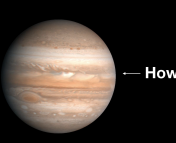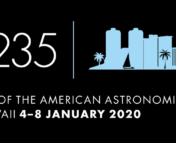Title: Disentangling CO Chemistry in a Protoplanetary Disk Using Explanatory Machine Learning Techniques
Authors: Amina Diop, Ilse Cleeves, Dana Anderson, Jamila Pegues, Adele Plunkett
First Author’s Institution: Department of Astronomy, University of Virginia, Charlottesville, VA 22904, USA
Status: Accepted in ApJ
As the birthplaces of planets, protoplanetary disks hold many useful clues for how planets form and evolve. One of the pieces of information we can gather from disks is composition – to date, over 35 different molecules have been detected in disks (see this bite for a summary of how these molecules are detected). Ideally, we want to be able to connect the abundances of different molecules to disk properties, such as total mass. This is more easily said than done however, as a lot of different factors can alter the observed abundances of different molecular species. For example, one of the molecules we arguably have the best chemical understanding of is CO (carbon monoxide), which has been studied in a number of protoplanetary disks. Nonetheless, measured CO abundances tend to be lower than expected, indicating that effects such as local variations in temperature and dust distributions throughout the disk may have a significant impact on the observed abundances.
In order to try to understand the connection between local disk environments and molecular abundances, studies typically simulate a disk many times over, running through a huge range of different disk properties. As you might imagine, this approach is slow and takes a lot of computational resources. Today’s authors are trying a new method, using machine learning to more quickly find connections between disk properties and abundances. The goal is to use machine learning to search large parameter spaces and understand which physical disk properties are most important to creating and destroying CO in disks.
Making a disk model
The authors start with a disk around a T Tauri star (a type of young, variable star that could be a typical host to disks). They assign a corresponding temperature and X-ray luminosity to the star, and assume the disk is a mix of gas and dust, with both large and small dust grains. After assuming some initial compositions for the disk, they then apply a complex chemical code, including several thousand (!) different reactions to the modeled disk to calculate the CO abundances over a 3 million year timescale. Figure 1 shows the initial distribution of CO in one of these models.
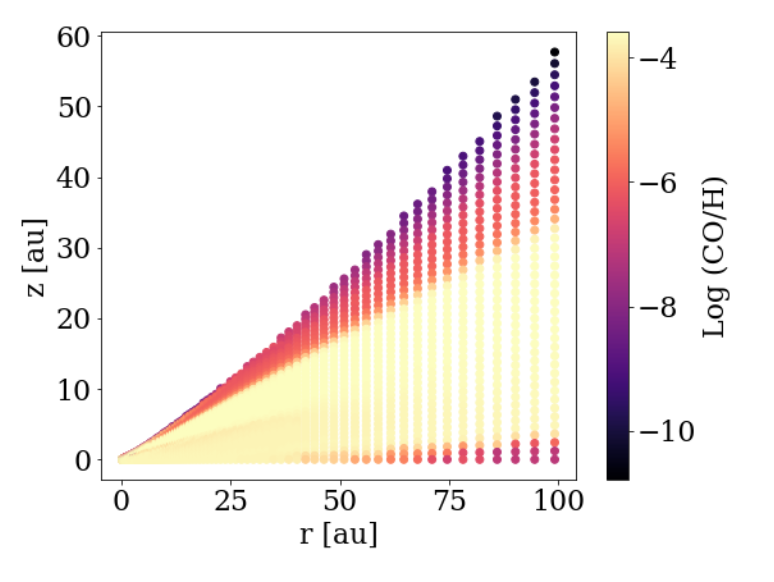
Figure 1: The initial CO abundances relative to H throughout the disk. You can think of r and z as x and y coordinates in the disk, where the star would be at (0,0). Image Credit: Figure 1 from today’s paper
Bring on the machine learning!
The authors consider each CO abundance calculated in the disk as a separate sample (so each point in Figure 1 is a sample), and check how each point’s CO value compares to local disk properties at that point, such as temperature, UV flux, and gas density. Figure 2 shows one example, with CO abundances plotted for specific temperatures and gas densities throughout the disk.
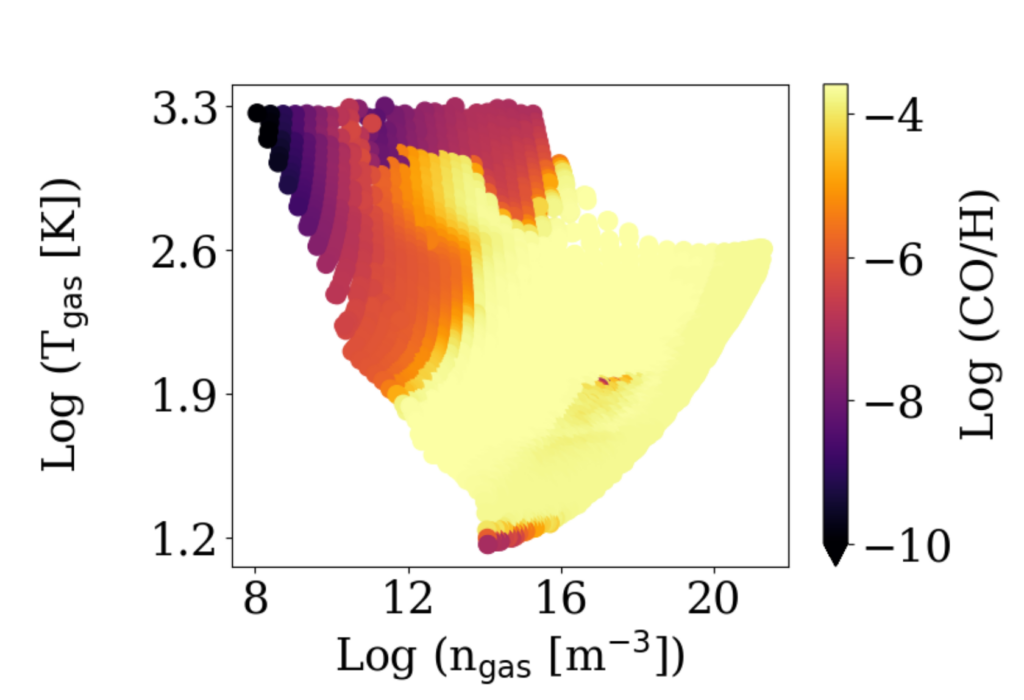
Figure 2: The disk from Figure 1, 1 Myr later. The points now show the CO abundance ratio for the corresponding temperature and gas density at each point in the disk. Image Credit: Figure 2 from today’s paper
To test the relationship between CO and the selected disk parameters, the authors assume their data follow a polynomial regression, where the CO abundance is a function of the different disk parameters, each multiplied by some coefficient. They then use a machine learning algorithm to solve for the coefficients that best recreate their modeled disk. The resulting coefficients indicate which parameters are most important to determining the resulting CO abundances.
The top contributors
After running their model and machine learning algorithms, the authors found that the log of gas density is the most important factor in determining CO abundance. They note that this makes sense because the abundance of CO is typically related to the abundance of H2 gas in a disk. Interestingly, they also find that the log of gas density squared decreases with increasing CO. This is because at higher densities there is a competing effect of depleting CO as it freezes into ice in dense, cold regions of the disk.
All together, ten factors are considered as disk parameters, and Figure 3 shows the different coefficients for each, where positive coefficients indicate positive correlations with CO and negative coefficients indicate negative correlations. The authors find that the negative correlations (aside from the strong effects of gas density) are stronger than the positive ones, indicating that disks may tend to destroy CO overall. They also find that other influences such as initial C/O ratios and rates of cosmic rays can also influence the relative strengths of the different factors.

Figure 3: The coefficients indicating positive or negative correlation of the parameters listed on the left with CO abundance. n_gas and T_gas correspond to the gas density and temperature, while F_UV is the UV flux from the star, zeta_cr describes the cosmic ray rate, and zeta_xr is the X-ray rate. Image Credit: Figure 7 from today’s paper
Know thy disk
This study provides a great proof-of-concept for the ways in which machine learning can be used to identify complex relationships in datasets, a particularly useful tool for studying the large number of entwined reactions involved in chemistry. It also brings up the important issue that molecular abundances can be influenced by many different factors, so we should consider disks as holistically as possible and always think about how multiple parameters may interact for a particular disk!
Astrobite edited by Lucas Brown
Featured Image Credit: Adapted from ESO/L. Calçada – ESO

